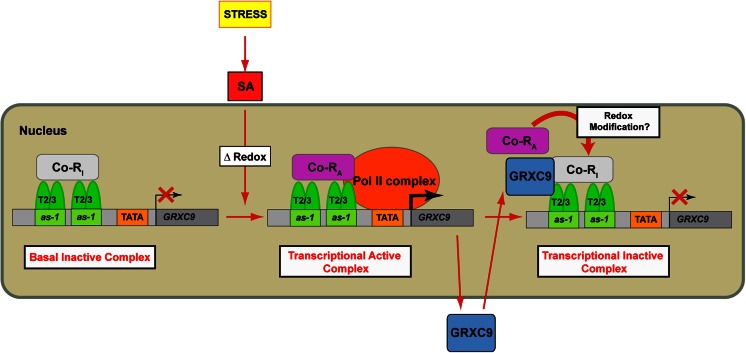Fig. 7.
Mechanistic model for the transcriptional control of GRXC9 expression by stress, via an SA-dependent and NPR1-independent pathway in Arabidopsis. Homodimers or heterodimers of TGA2 and TGA3 (T2/3) are constitutively bound to the two as-1-like elements of the GRXC9 promoter, acting as a platform for the formation of transcriptionally inactive and active complexes. Under basal conditions, an inactive form of a coregulator (Co-RI) is bound to the TGA2-3/as-1-like complex forming a basal complex that impairs recruitment of the Pol II to the GRXC9 promoter. Upon stress, SA is rapidly accumulated promoting the activation of the coregulator complex (switch from Co-RI to Co-RA) that binds to the TGA2-3/as-1-like complex, allowing the formation of a transcriptionally active complex that recruits the Pol II basal machinery (Pol II complex) to the GRXC9 basal promoter. Transcription of GRXC9 leads to the accumulation of the GRXC9 protein in the nucleus where it binds to the TGA2-3/as-1-like complex producing the inactivation of the coregulator complex (switch from Co-RA to Co-RI) and therefore turning off GRXC9 transcription. We speculate that the switch from Co-RI to Co-RA promoted by SA is produced by the oxidative modification of one of the proteins involved in the promoter complex, while the switch from Co-RA to Co-RI is produced by the protein’s reduction catalyzed by GRXC9

